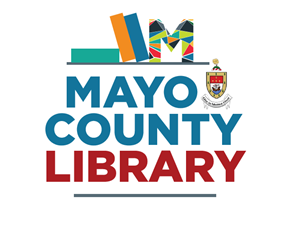In Humbert's Footsteps
1798 & the Year of the French
The Rebellion of 1798 originated from the revolutionary ideas of the Society of United Irishmen, established in Belfast in 1791 by a group including the young Dublin lawyer, Theobald Wolfe Tone. Their radicalism fused the ideas of modern democracy and ideals of equality and liberty, inspired by the Americans and French, with Irish patriotism. Uprisings first took place in Ulster and Leinster, although they were widely separated by distance and context. Both were savagely repressed by the military before an outbreak of hostilities occurred in Mayo.
On 22 August 1798, a French expedition of 1,000 men under the leadership of General Jean Joseph Amable Humbert (b.1767) landed at Kilcummin, north of Killala. Matthew Tone, brother of Wolfe Tone, was on board General Humbert’s ship when it sailed into Killala Bay. After landing, the French took over the residence of Bishop Stock, the Church of Ireland Bishop of Killala, as a temporary headquarters, before making their way to Ballina and thence cross country to Castlebar.
The French were surprised by the lack of military training among the Irish who supported them. Nonetheless, more than 3,000 Irish recruits joined their ranks on the march to Castlebar, many armed only with pikes and pitchforks. This Franco-Irish force marched along the remote west shore of Lough Conn over rough uneven ground. They passed Barnageeha (the Windy Gap) and arrived at Castlebar to face a startled British garrison under the command of General Lake. They broke through the Crown forces and moved from Staball Hill down Thomas Street to what was then the marketplace. From here, they took Castlebar Bridge, under the command of General Fontaine. With the rebels in pursuit, the Crown forces broke and fled in what became known as the ‘Races of Castlebar’.
But then their fortunes turned. The Franco-Irish forces were finally surrounded by English troops on 8 September 1798 at Ballinamuck in Co. Longford. Here, the French surrender was accepted, but some 2,000 Irish were massacred. Father Andrew Conroy, parish priest of Addergoole (Lahardane) and Father Manus Sweeney of Newport were hanged for their support of the French.
John Moore (1767-99) of Moore Hall, Lough Carra, joined the 1798 rebellion while a student of law in Dublin. He later became the first President of the newly declared Republic of Connaught. However, the republic was short-lived and Moore was imprisoned for over a year, dying in 1799 in a Waterford gaol while awaiting trial. He was buried in Ballygunner Cemetery in Waterford. In August 1961, his body was brought home to Mayo and re-interred in Castlebar on The Mall, where a memorial gravestone was erected.
The Rebellion of 1798 remained a potent event around which Republicans rallied for many generations. The ‘Maid of Erin’ monument, sculpted by T.H. Denning, was unveiled in Ballina for the centennial commemoration of the rebellion in 1898 by Maud Gonne MacBride.
The inscription on the monument reads:
Well they fought for poor old Ireland
And full bitter was their fate
Oh! What glorious pride and sorrow
Fill the name of ninety eight
Mayo County Library has produced a major exhibition on the 1798 rebellion in Mayo. The exhibition In Humbert’s Footsteps, was created by local historian Steve Dunford and much of the content is drawn from his book In Humbert’s Footsteps: Mayo 1798 which was published in 2006. It was designed by Niall Kerrigan and a full screen version of the exhibition can be viewed and read by selecting the link below
In Humbert’s Footsteps: 1798 and The Year of the French
(requires Acrobat reader: opens in new window)

